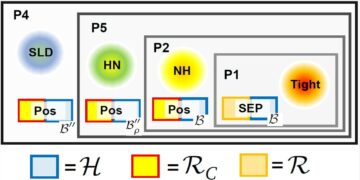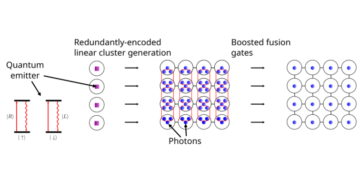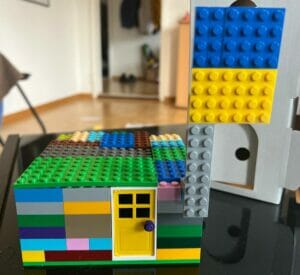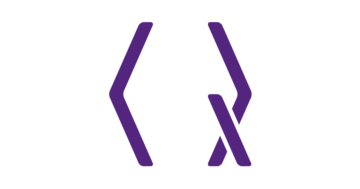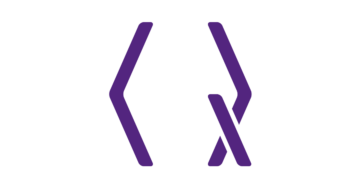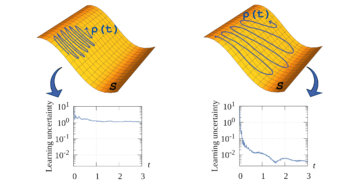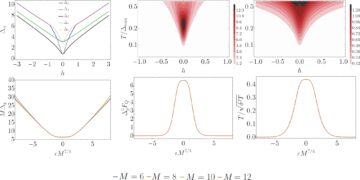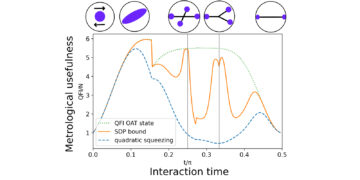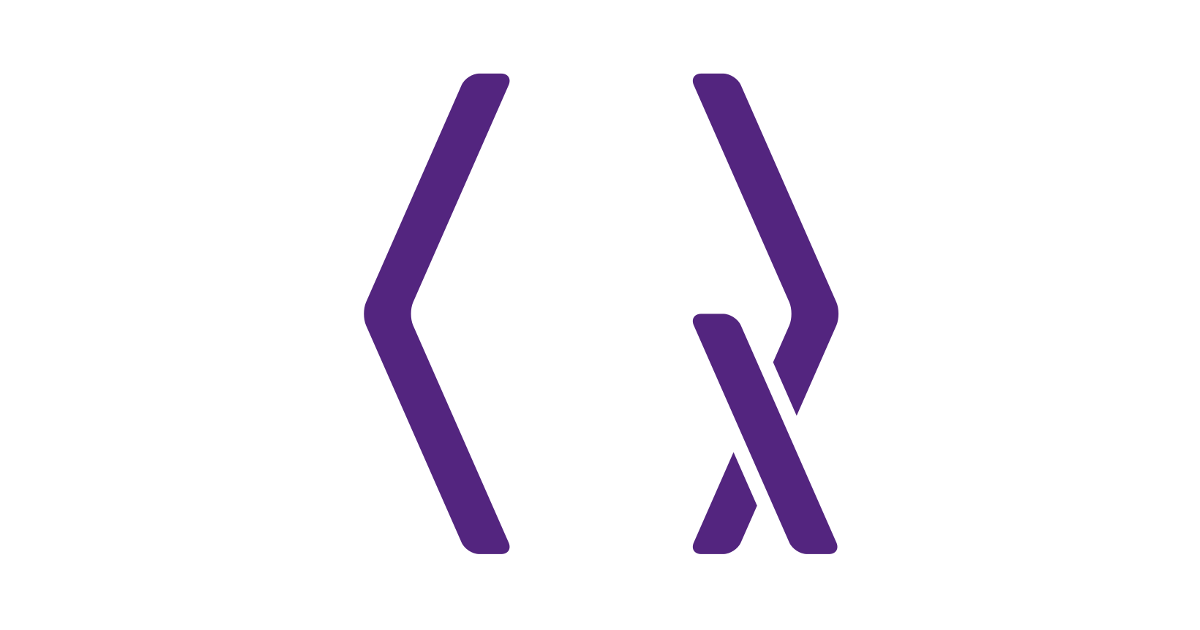
1Henan Key Laboratory of Quantum Information and Cryptography, SSF IEU, Zhengzhou 450000, China
2CAS Key Laboratory of Quantum Information, University of Science and Technology of China, Hefei, Anhui 230026, China
3Institute of Quantum Information and Technology, Nanjing University of Posts and Telecommunications, Nanjing 210003, China
4School of Information and Communication Engineering, Hainan University, Haikou 570228, China
Find this paper interesting or want to discuss? Scite or leave a comment on SciRate.
Abstract
In this work, we apply the advantage distillation method to improve the performance of a practical twin-field quantum key distribution system under collective attack. Compared with the previous analysis result given by Maeda, Sasaki and Koashi [Nature Communication 10, 3140 (2019)], the maximal transmission distance obtained by our analysis method will be increased from 420 km to 470 km. By increasing the loss-independent misalignment error to 12%, the previous analysis method can not overcome the rate-distance bound. However, our analysis method can still overcome the rate-distance bound when the misalignment error is 16%. More surprisingly, we prove that twin-field quantum key distribution can generate positive secure key even if the misalignment error is close to 50%, thus our analysis method can significantly improve the performance of a practical twin-field quantum key distribution system.
► BibTeX data
► References
[1] Charles H. Bennett and Gilles Brassard. “Quantum cryptography: Public key distribution and coin tossing”. Theoretical Computer Science 560, 7–11 (2014).
https://doi.org/10.1016/j.tcs.2014.05.025
[2] Hoi-Kwong Lo and Hoi Fung Chau. “Unconditional security of quantum key distribution over arbitrarily long distances”. Science 283, 2050–2056 (1999).
https://doi.org/10.1126/science.283.5410.2050
[3] Peter W Shor and John Preskill. “Simple proof of security of the bb84 quantum key distribution protocol”. Physical Review Letters 85, 441 (2000).
https://doi.org/10.1103/PhysRevLett.85.441
[4] Renato Renner. “Security of quantum key distribution”. International Journal of Quantum Information 6, 1–127 (2008).
https://doi.org/10.1142/S0219749908003256
[5] Valerio Scarani, Helle Bechmann-Pasquinucci, Nicolas J Cerf, Miloslav Dušek, Norbert Lütkenhaus, and Momtchil Peev. “The security of practical quantum key distribution”. Reviews of Modern Physics 81, 1301 (2009).
https://doi.org/10.1103/RevModPhys.81.1301
[6] Hong-Wei Li, Shuang Wang, Jing-Zheng Huang, Wei Chen, Zhen-Qiang Yin, Fang-Yi Li, Zheng Zhou, Dong Liu, Yang Zhang, Guang-Can Guo, et al. “Attacking a practical quantum-key-distribution system with wavelength-dependent beam-splitter and multiwavelength sources”. Physical Review A 84, 062308 (2011).
https://doi.org/10.1103/PhysRevA.84.062308
[7] Lars Lydersen, Carlos Wiechers, Christoffer Wittmann, Dominique Elser, Johannes Skaar, and Vadim Makarov. “Hacking commercial quantum cryptography systems by tailored bright illumination”. Nature Photonics 4, 686–689 (2010).
https://doi.org/10.1038/nphoton.2010.214
[8] Hong-Wei Li, Zheng-Mao Xu, and Qing-Yu Cai. “Small imperfect randomness restricts security of quantum key distribution”. Physical Review A 98, 062325 (2018).
https://doi.org/10.1103/PhysRevA.98.062325
[9] Samuel L Braunstein and Stefano Pirandola. “Side-channel-free quantum key distribution”. Physical Review Letters 108, 130502 (2012).
https://doi.org/10.1103/PhysRevLett.108.130502
[10] Hoi-Kwong Lo, Marcos Curty, and Bing Qi. “Measurement-device-independent quantum key distribution”. Physical Review Letters 108, 130503 (2012).
https://doi.org/10.1103/PhysRevLett.108.130503
[11] Leong-Chuan Kwek, Lin Cao, Wei Luo, Yunxiang Wang, Shihai Sun, Xiangbin Wang, and Ai Qun Liu. “Chip-based quantum key distribution”. AAPPS Bulletin 31 (2021).
https://doi.org/10.1007/s43673-021-00017-0
[12] Stefano Pirandola, Riccardo Laurenza, Carlo Ottaviani, and Leonardo Banchi. “Fundamental limits of repeaterless quantum communications”. Nature Communications 8, 15043 (2017).
https://doi.org/10.1038/ncomms15043
[13] Marco Lucamarini, Zhiliang L Yuan, James F Dynes, and Andrew J Shields. “Overcoming the rate–distance limit of quantum key distribution without quantum repeaters”. Nature 557, 400–403 (2018).
https://doi.org/10.1038/s41586-018-0066-6
[14] Xiongfeng Ma, Pei Zeng, and Hongyi Zhou. “Phase-matching quantum key distribution”. Physical Review X 8, 031043 (2018).
https://doi.org/10.1103/PhysRevX.8.031043
[15] Xiang-Bin Wang, Zong-Wen Yu, and Xiao-Long Hu. “Twin-field quantum key distribution with large misalignment error”. Physical Review A 98, 062323 (2018).
https://doi.org/10.1103/PhysRevA.98.062323
[16] Chaohan Cui, Zhen-Qiang Yin, Rong Wang, Wei Chen, Shuang Wang, Guang-Can Guo, and Zheng-Fu Han. “Twin-field quantum key distribution without phase postselection”. Physical Review Applied 11, 034053 (2019).
https://doi.org/10.1103/PhysRevApplied.11.034053
[17] Marcos Curty, Koji Azuma, and Hoi-Kwong Lo. “Simple security proof of twin-field type quantum key distribution protocol”. npj Quantum Information 5, 64 (2019).
https://doi.org/10.1038/s41534-019-0175-6
[18] Jie Lin and Norbert Lütkenhaus. “Simple security analysis of phase-matching measurement-device-independent quantum key distribution”. Physical Review A 98, 042332 (2018).
https://doi.org/10.1103/PhysRevA.98.042332
[19] Kento Maeda, Toshihiko Sasaki, and Masato Koashi. “Repeaterless quantum key distribution with efficient finite-key analysis overcoming the rate-distance limit”. Nature Communications 10, 3140 (2019).
https://doi.org/10.1038/s41467-019-11008-z
[20] Guillermo Currás-Lorenzo, Álvaro Navarrete, Koji Azuma, Go Kato, Marcos Curty, and Mohsen Razavi. “Tight finite-key security for twin-field quantum key distribution”. npj Quantum Information 7, 22 (2021).
https://doi.org/10.1038/s41534-020-00345-3
[21] Guillermo Currás-Lorenzo, Lewis Wooltorton, and Mohsen Razavi. “Twin-field quantum key distribution with fully discrete phase randomization”. Physical Review Applied 15, 014016 (2021).
https://doi.org/10.1103/PhysRevApplied.15.014016
[22] M Minder, M Pittaluga, GL Roberts, M Lucamarini, JF Dynes, ZL Yuan, and AJ Shields. “Experimental quantum key distribution beyond the repeaterless secret key capacity”. Nature Photonics 13, 334–338 (2019).
https://doi.org/10.1038/s41566-019-0377-7
[23] Xiaoqing Zhong, Jianyong Hu, Marcos Curty, Li Qian, and Hoi-Kwong Lo. “Proof-of-principle experimental demonstration of twin-field type quantum key distribution”. Physical Review Letters 123, 100506 (2019).
https://doi.org/10.1103/PhysRevLett.123.100506
[24] Yang Liu, Zong-Wen Yu, Weijun Zhang, Jian-Yu Guan, Jiu-Peng Chen, Chi Zhang, Xiao-Long Hu, Hao Li, Cong Jiang, Jin Lin, et al. “Experimental twin-field quantum key distribution through sending or not sending”. Physical Review Letters 123, 100505 (2019).
https://doi.org/10.1103/PhysRevLett.123.100505
[25] Shuang Wang, De-Yong He, Zhen-Qiang Yin, Feng-Yu Lu, Chao-Han Cui, Wei Chen, Zheng Zhou, Guang-Can Guo, and Zheng-Fu Han. “Beating the fundamental rate-distance limit in a proof-of-principle quantum key distribution system”. Physical Review X 9, 021046 (2019).
https://doi.org/10.1103/PhysRevX.9.021046
[26] Hui Liu, Cong Jiang, Hao-Tao Zhu, Mi Zou, Zong-Wen Yu, Xiao-Long Hu, Hai Xu, Shizhao Ma, Zhiyong Han, Jiu-Peng Chen, Yunqi Dai, Shi-Biao Tang, Weijun Zhang, Hao Li, Lixing You, Zhen Wang, Yong Hua, Hongkun Hu, Hongbo Zhang, Fei Zhou, Qiang Zhang, Xiang-Bin Wang, Teng-Yun Chen, and Jian-Wei Pan. “Field test of twin-field quantum key distribution through sending-or-not-sending over 428 km”. Physical Review Letters 126, 250502 (2021).
https://doi.org/10.1103/PhysRevLett.126.250502
[27] Jiu-Peng Chen, Chi Zhang, Yang Liu, Cong Jiang, Wei-Jun Zhang, Zhi-Yong Han, Shi-Zhao Ma, Xiao-Long Hu, Yu-Huai Li, Hui Liu, Fei Zhou, Hai-Feng Jiang, Teng-Yun Chen, Hao Li, Li-Xing You, Zhen Wang, Xiang-Bin Wang, Qiang Zhang, and Jian-Wei Pan. “Twin-field quantum key distribution over a 511 km optical fibre linking two distant metropolitan areas”. Nature Photonics 15, 570–575 (2021).
https://doi.org/10.1038/s41566-021-00828-5
[28] Shuang Wang, Zhen-Qiang Yin, De-Yong He, Wei Chen, Rui-Qiang Wang, Peng Ye, Yao Zhou, Guan-Jie Fan-Yuan, Fang-Xiang Wang, Yong-Gang Zhu, Pavel V Morozov, Alexander V Divochiy, Zheng Zhou, Guang-Can Guo, and Zheng-Fu Han. “Twin-field quantum key distribution over 830-km fibre”. Nature Photonics 16, 154–161 (2022).
https://doi.org/10.1038/s41566-021-00928-2
[29] Hua-Lei Yin and Zeng-Bing Chen. “Coherent-state-based twin-field quantum key distribution”. Scientific Reports 9, 14918 (2019).
https://doi.org/10.1038/s41598-019-50429-0
[30] Mario Mastriani and Sundaraja Sitharama Iyengar. “Satellite quantum repeaters for a quantum internet”. Quantum Engineering 2, e55 (2020).
https://doi.org/10.1002/que2.55
[31] Xiao-Min Hu, Cen-Xiao Huang, Yu-Bo Sheng, Lan Zhou, Bi-Heng Liu, Yu Guo, Chao Zhang, Wen-Bo Xing, Yun-Feng Huang, Chuan-Feng Li, and Guang-Can Guo. “Long-distance entanglement purification for quantum communication”. Physical Review Letters 126, 010503 (2021).
https://doi.org/10.1103/PhysRevLett.126.010503
[32] Gui-Lu Long, Dong Pan, Yu-Bo Sheng, Qikun Xue, Jianhua Lu, and Lajos Hanzo. “An evolutionary pathway for the quantum internet relying on secure classical repeaters”. IEEE Network 36, 82–88 (2022).
https://doi.org/10.1109/MNET.108.2100375
[33] Ueli M Maurer. “Secret key agreement by public discussion from common information”. IEEE Transactions on Information Theory 39, 733–742 (1993).
https://doi.org/10.1109/18.256484
[34] Barbara Kraus, Cyril Branciard, and Renato Renner. “Security of quantum-key-distribution protocols using two-way classical communication or weak coherent pulses”. Physical Review A 75, 012316 (2007).
https://doi.org/10.1103/PhysRevA.75.012316
[35] Joonwoo Bae and Antonio Acín. “Key distillation from quantum channels using two-way communication protocols”. Physical Review A 75, 012334 (2007).
https://doi.org/10.1103/PhysRevA.75.012334
[36] Gláucia Murta, Filip Rozpędek, Jérémy Ribeiro, David Elkouss, and Stephanie Wehner. “Key rates for quantum key distribution protocols with asymmetric noise”. Physical Review A 101, 062321 (2020).
https://doi.org/10.1103/PhysRevA.101.062321
[37] Ernest Y.-Z. Tan, Charles C.-W. Lim, and Renato Renner. “Advantage distillation for device-independent quantum key distribution”. Physical Review Letters 124, 020502 (2020).
https://doi.org/10.1103/PhysRevLett.124.020502
[38] Dagmar Bruß. “Optimal eavesdropping in quantum cryptography with six states”. Physical Review Letters 81, 3018 (1998).
https://doi.org/10.1103/PhysRevLett.81.3018
[39] Won-Young Hwang. “Quantum key distribution with high loss: toward global secure communication”. Physical Review Letters 91, 057901 (2003).
https://doi.org/10.1103/PhysRevLett.91.057901
[40] Xiang-Bin Wang. “Beating the photon-number-splitting attack in practical quantum cryptography”. Physical Review Letters 94, 230503 (2005).
https://doi.org/10.1103/PhysRevLett.94.230503
[41] Hoi-Kwong Lo, Xiongfeng Ma, and Kai Chen. “Decoy state quantum key distribution”. Physical Review Letters 94, 230504 (2005).
https://doi.org/10.1103/PhysRevLett.94.230504
[42] Hong-Wei Li, Chun-Mei Zhang, Mu-Sheng Jiang, and Qing-Yu Cai. “Improving the performance of practical decoy-state quantum key distribution with advantage distillation technology”. Communications Physics 5, 53 (2022).
https://doi.org/10.1038/s42005-022-00831-4
[43] Daniel Gottesman and Hoi-Kwong Lo. “Proof of security of quantum key distribution with two-way classical communications”. IEEE Transactions on Information Theory 49, 457–475 (2003).
https://doi.org/10.1109/TIT.2002.807289
[44] Rui-Qiang Wang, Chun-Mei Zhang, Zhen-Qiang Yin, Hong-Wei Li, Shuang Wang, Wei Chen, Guang-Can Guo, and Zheng-Fu Han. “Phase-matching quantum key distribution with advantage distillation”. New Journal of Physics 24, 073049 (2022).
https://doi.org/10.1088/1367-2630/ac8115
[45] Zong-Wen Yu, Xiao-Long Hu, Cong Jiang, Hai Xu, and Xiang-Bin Wang. “Sending-or-not-sending twin-field quantum key distribution in practice”. Scientific Reports 9, 3080 (2019).
https://doi.org/10.1038/s41598-019-39225-y
[46] Hai Xu, Zong-Wen Yu, Cong Jiang, Xiao-Long Hu, and Xiang-Bin Wang. “Sending-or-not-sending twin-field quantum key distribution: Breaking the direct transmission key rate”. Physical Review A 101, 042330 (2020).
https://doi.org/10.1103/PhysRevA.101.042330
[47] Xiao-Long Hu, Cong Jiang, Zong-Wen Yu, and Xiang-Bin Wang. “Sending-or-not-sending twin-field protocol for quantum key distribution with asymmetric source parameters”. Physical Review A 100, 062337 (2019).
https://doi.org/10.1103/PhysRevA.100.062337
[48] Marco Tomamichel. “A framework for non-asymptotic quantum information theory”. Doctoral thesis. ETH Zürich. Zürich (2012).
https://doi.org/10.3929/ethz-a-7356080
[49] Jaikumar Radhakrishnan and Amnon Ta-Shma. “Bounds for dispersers, extractors, and depth-two superconcentrators”. SIAM Journal on Discrete Mathematics 13, 2–24 (2000).
https://doi.org/10.1137/S0895480197329508
[50] Wassily Hoeffding. “Probability inequalities for sums of bounded random variables”. Journal of the American Statistical Association 58, 13–30 (1963).
https://doi.org/10.2307/2282952
Cited by
[1] Li-Wen Hu, Chun-Mei Zhang, and Hong-Wei Li, “Practical measurement-device-independent quantum key distribution with advantage distillation”, Quantum Information Processing 22 1, 77 (2023).
[2] Xin Liu, Di Luo, Zhenrong Zhang, and Kejin Wei, “Mode-pairing quantum key distribution with advantage distillation”, Physical Review A 107 6, 062613 (2023).
[3] Rui-Qiang Wang, Chun-Mei Zhang, Zhen-Qiang Yin, Hong-Wei Li, Shuang Wang, Wei Chen, Guang-Can Guo, and Zheng-Fu Han, “Phase-matching quantum key distribution with advantage distillation”, New Journal of Physics 24 7, 073049 (2022).
[4] Xiao-Lei Jiang, Yang Wang, Jia-Ji Li, Yi-Fei Lu, Chen-Peng Hao, Chun Zhou, and Wan-Su Bao, “Improving the performance of reference-frame-independent quantum key distribution with advantage distillation technology”, Optics Express 31 6, 9196 (2023).
[5] Jian-Rong Zhu, Chun-Mei Zhang, Rong Wang, and Hong-Wei Li, “Reference-frame-independent quantum key distribution with advantage distillation”, Optics Letters 48 3, 542 (2023).
[6] Hong-Wei Li, Rui-Qiang Wang, Chun-Mei Zhang, and Qing-Yu Cai, “Improving the performance of twin-field quantum key distribution with advantage distillation technology”, Quantum 7, 1201 (2023).
[7] Kailu Zhang, Jingyang Liu, Huajian Ding, Xingyu Zhou, Chunhui Zhang, and Qin Wang, “Asymmetric Measurement-Device-Independent Quantum Key Distribution through Advantage Distillation”, Entropy 25 8, 1174 (2023).
The above citations are from SAO/NASA ADS (last updated successfully 2023-12-25 17:07:29). The list may be incomplete as not all publishers provide suitable and complete citation data.
On Crossref’s cited-by service no data on citing works was found (last attempt 2023-12-25 17:07:28).
This Paper is published in Quantum under the Creative Commons Attribution 4.0 International (CC BY 4.0) license. Copyright remains with the original copyright holders such as the authors or their institutions.
- SEO Powered Content & PR Distribution. Get Amplified Today.
- PlatoData.Network Vertical Generative Ai. Empower Yourself. Access Here.
- PlatoAiStream. Web3 Intelligence. Knowledge Amplified. Access Here.
- PlatoESG. Carbon, CleanTech, Energy, Environment, Solar, Waste Management. Access Here.
- PlatoHealth. Biotech and Clinical Trials Intelligence. Access Here.
- Source: https://quantum-journal.org/papers/q-2023-12-06-1201/
- :is
- :not
- 07
- 1
- 10
- 100
- 107
- 11
- 12
- 13
- 14
- 15%
- 16
- 17
- 19
- 1998
- 1999
- 20
- 2000
- 2005
- 2008
- 2009
- 2010
- 2011
- 2012
- 2014
- 2017
- 2018
- 2019
- 2020
- 2021
- 2022
- 2023
- 2050
- 214
- 22
- 23
- 24
- 25
- 26
- 27
- 28
- 29
- 30
- 31
- 32
- 33
- 35%
- 36
- 39
- 40
- 41
- 420
- 46
- 49
- 50
- 58
- 7
- 75
- 77
- 8
- 84
- 9
- 91
- 98
- a
- above
- ABSTRACT
- access
- ADvantage
- affiliations
- Agreement
- AI
- AL
- Alexander
- All
- American
- analysis
- and
- Andrew
- applied
- Apply
- ARE
- areas
- AS
- Association
- attack
- attempt
- author
- authors
- BE
- Beyond
- Bing
- bound
- Break
- Breaking
- Bright
- bulletin
- by
- CAN
- Capacity
- carlos
- channels
- Charles
- chen
- China
- citing
- Close
- COHERENT
- Coin
- Collective
- comment
- commercial
- Common
- Commons
- Communication
- Communications
- compared
- complete
- computer
- computer science
- copyright
- cryptography
- DAI
- Daniel
- data
- David
- Den
- direct
- discuss
- discussion
- distance
- Distant
- distribution
- E&T
- efficient
- Engineering
- entanglement
- error
- ETH
- Ether (ETH)
- Even
- experimental
- express
- fei
- For
- found
- Framework
- from
- fully
- fundamental
- generate
- Gilles
- given
- Global
- Go
- harvard
- he
- High
- holders
- However
- HTTPS
- huang
- IEEE
- if
- improve
- improving
- in
- increased
- increasing
- inequalities
- information
- institutions
- interesting
- International
- Internet
- james
- JavaScript
- Jian-Wei Pan
- John
- journal
- Key
- laboratory
- large
- Last
- Leave
- Leftover
- Lewis
- li
- License
- LIMIT
- limits
- lin
- linking
- List
- Long
- loss
- Marco
- Mario
- mathematics
- May..
- method
- Modern
- Month
- more
- nanjing
- Nature
- network
- New
- Nicolas
- no
- Noise
- obtained
- of
- on
- open
- optical
- or
- original
- our
- over
- Overcome
- overcoming
- pages
- PAN
- Paper
- parameters
- pathway
- performance
- Peter
- phase
- physical
- Physics
- plato
- Plato Data Intelligence
- PlatoData
- positive
- Posts
- Practical
- practice
- previous
- processing
- proof
- protocol
- protocols
- Prove
- provide
- public
- Public Key
- published
- publisher
- publishers
- Qi
- Quantum
- quantum cryptography
- quantum information
- Quantum Internet
- random
- randomness
- Rate
- Rates
- references
- relying
- remains
- Reports
- result
- review
- Reviews
- Ribeiro
- s
- Science
- Science and Technology
- scientific
- Secret
- secure
- security
- sending
- siam
- significantly
- SIX
- Source
- Sources
- State
- States
- statistical
- Still
- Successfully
- such
- suitable
- sums
- Sun
- system
- Systems
- tailored
- tang
- Technology
- telecommunications
- test
- that
- The
- their
- theoretical
- theory
- thesis
- this
- Through
- Thus
- Title
- to
- toward
- Transactions
- two
- type
- under
- university
- University of Science and Technology of China
- updated
- URL
- using
- variables
- volume
- W
- wang
- want
- was
- we
- when
- will
- with
- without
- Work
- works
- X
- ye
- year
- you
- Yuan
- zephyrnet
- zhang
- Zhengzhou
- Zhong



